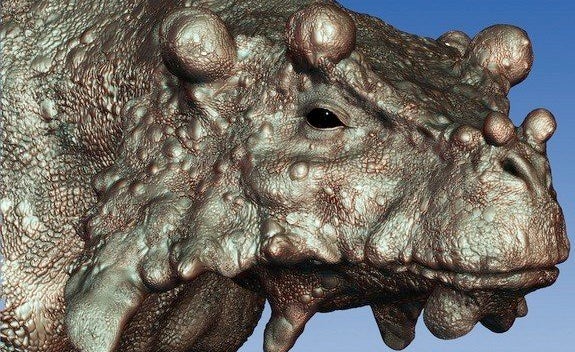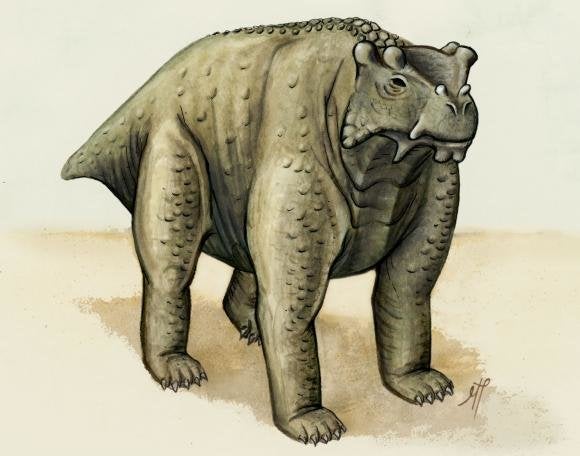
Dogs do it. Cats do it. Pigs, cows, and hippos, too. But a new study suggests that the earliest known animal to have walked upright on all fours was a bizarre "pre-reptile" that lived some 260 million years ago.
Dubbed Bunostegos akokanensis, the prehistoric plant-eater was the size of a cow, and walked like a cow. But its face was studded with big bony knobs.
Paleontologists first identified the B. akokanensis in 2003 after discovering a fossilized skull in the Sahara Desert of northern Niger. Now scientists have concluded that Bunostegos stood on all fours with its bulky body raised off the ground--unlike any other animal that roamed the supercontinent Pangea at the time.
(Story continues below image.)

"We don’t see upright posture, with the legs underneath the body, in both the forelimb and the hindlimb in a single animal until much later, in mammals and in dinosaurs," Morgan Turner, a Ph.D. student at Brown University in Rhode Island and lead author of the study, told The Huffington Post in an email. "Bunostegos is much further back on the evolutionary tree than anything else that exhibits this posture [and] hints at a larger story about posture and locomotion evolution... The anatomy of Bunostegos is unexpected, illuminating, and tells us we still have much to learn."
For the study, the researchers examined fossilized Bunostegos bones including those of the shoulder, the elbow, the forelimb bone known as humerus and another forelimb bone known as the ulna. The researchers found that the hip joint in the hind limbs and the bones that make up the forelimbs had features seen only in upright animals.
"Aspects of the anatomy of the shoulder and the forelimb indicate that the humerus could not have jutted out in a 'sprawling' posture," Dr. Linda Tsuji, contract assistant curator at the Royal Ontario Museum in Canada and a co-author of the study, told The Huffington Post in an email, "and in Bunostegos we see limited motion at the elbow joint, which is an indication of upright posture in other animals."
Walking upright on all fours may have allowed Bunostegos to travel long distances--an ability that might have helped it survive the central desert of Pangea where it lived, Turner said.
"Here's this big, cow-sized animal in this very arid region," Dr. Nick Fraser, vertebrate paleontologist at the National Museums of Scotland, who was not involved in the study, told The Huffington Post in a telephone interview. "You don't think of big herbivores in arid regions. What was going on there? Do we really understand what the climate was?... The more we learn about this creature, the more we will learn about what appears to be an isolated environment in the center of Pangea."
The study was published Sept. 11 in the Journal of Vertebrate Paleontology,
If you thought Bunostegos was wild, check out the "Talk Nerdy To Me" episode below for five prehistoric mammals that were equally monstrous.
